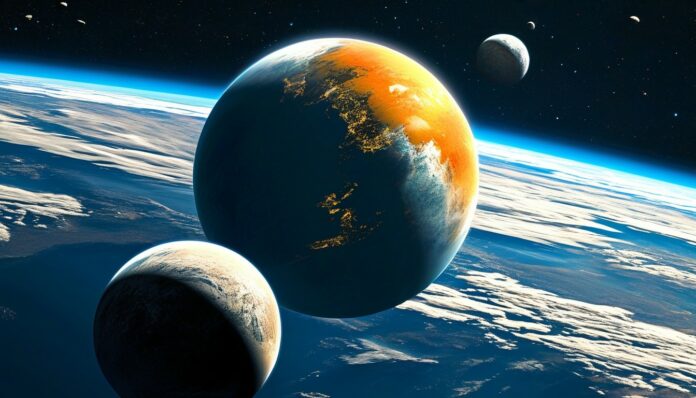In our Solar System, there are several hundred moons orbiting various planets. Not all of them are large or of great interest to scientists, but some are truly unique. Scientists even speculate that life might exist on some of them, but our current technology isn’t advanced enough to confirm this. However, in recent years, there have been significant efforts to study these moons, and our knowledge about them continues to grow.
Facts About Planetary Moons:
- Our Earth has only one natural satellite, the Moon, but there are also temporary satellites. A good example is the asteroid 2006 RH, which orbits the Sun but comes close to Earth about once every 20 years, temporarily entering Earth’s orbit.
- Only two planets in the Solar System lack natural satellites: Venus and Mercury.
- Moons aren’t exclusive to planets; dwarf planets like Pluto, Haumea, Eris, and Makemake also have their own moons.
- The asteroid Ida has its own moon called Dactyl, which is a smaller asteroid with a diameter of less than 1.5 kilometers, making it the smallest known moon in the Solar System.
- The largest moon in the Solar System is Ganymede, which orbits Jupiter.
- One of Saturn’s rings is composed almost entirely of ice particles ejected into space by the icy geysers on its moon, Enceladus.
- Jupiter has the most moons of any planet in the Solar System, with 79 known moons to date. Saturn comes in second with 62 moons.
- Saturn’s moons Epimetheus and Janus are unique because they likely were once a single body. They are notable for their interaction: every four years, they come close to colliding, swap places and orbits, and repeat the cycle again after another four years.
- Jupiter’s moon Io is the most geologically active celestial body in our system, with about 400 active volcanoes, making its surface a hellish landscape of molten magma and toxic fumes.
- Another of Jupiter’s moons, Europa, has one of the smoothest surfaces among all celestial bodies. Europa has very few craters, but it is covered in many cracks.
- Scientists believe that Mars’ moons, Phobos and Deimos, are captured asteroids.
- Saturn’s moon Enceladus reflects more sunlight than any other celestial body in the Solar System—almost 100%.
- If there is extraterrestrial life in the Solar System, it is most likely to be found in the subsurface oceans of Europa or Enceladus, two of Jupiter’s moons.
- The terrain on Uranus’ moon Miranda is so varied that it is often called the ugliest body in the Solar System. Miranda features canyons that are 12 times deeper than the Grand Canyon in the United States.
- The first soft landing on a moon of the outer Solar System was in 2005 when the Huygens probe separated from the Cassini spacecraft and landed on Saturn’s moon Titan.
- Titan is the only celestial body in the Solar System (besides Earth) where liquid has been confirmed to exist on the surface. It has rivers and lakes, though they are composed of methane and ethane rather than water.
- Moons like Titan and Ganymede are larger than the planet Mercury.
- Neptune’s moon Triton is the only known moon in the Solar System that orbits its planet in the opposite direction of the planet’s rotation.
- Europa is estimated to have 2-3 times more water than Earth.
- Titan’s atmosphere is denser than Earth’s, providing protection from Jupiter’s radiation. Many scientists believe that Titan, rather than Mars, is the most promising candidate for colonization in the Solar System.
